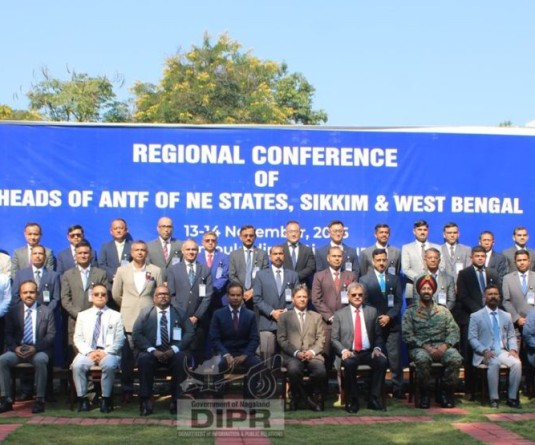
Morung Express News
Dimapur | February 25
Forest cover in Nagaland State has decreased by 450 sq km since 2015, according to the India State of Forest Report (ISFR) 2017 which was released this month.
As per the report, which is a biennial publication of the Forest Survey of India (FSI), the maximum decline of green cover in the state pertained to ‘Open Forest’ (OF). This declined by 342 sq km since 2015.
The FSI categorizes Open Forests as all lands with tree cover (Including mangrove cover) of canopy density between 10% and 40%.
Medium Dense Forests (MDF) also declined by 103 sq km while Very Dense Forests (VDF) declined by 5 sq km. MDF pertains to all lands with tree cover (Including mangrove cover) of canopy density between 40% and 70% above while VDF includes all Lands with tree cover (Including mangrove cover) of canopy density of 70% and above If the loss of ‘Scrub’ land (-114 sq km) is added, the total net loss or forest area increased by 564 sq km from the previous assessment conducted in 2015.
The total classification on forest in the state at present was VDF – 1279; MDF – 4687; OF – 6623; Scrub 503; and Non-Forest – 3587 sq km; totaling to 16,579 sq km. Overall the total forest cover in Nagaland was 12,489 sq km. This constitutes 75.33% of the state’s total geographical area.
In terms of districts, Tuensang registered the maximum decrease of forest cover since the last assessment (99 square kilometers). Tuensang was followed by Mon (59 sq kms), Phek (57 sq kms), Kiphire (53 sq kms), and Kohima (39 sq kms). Dimapur registered zero change in forest cover. (See Table for details)
The reasons for the decline in Nagaland’s forest cover were however summed up in just one sentence by the report. The ISFR 2017 attributed shifting cultivation and developmental activities as the main cause.
Nationally however, the overall, forest and tree Cover of the country has increased by 8,021 sq km (1 %) as compared to assessment of 2015, according to the report. The Very Dense Forest (VDF) has increased by 1.36 % compared to the last assessment, the report highlighted noting that, “This is very heartening as VDF absorbs maximum carbon dioxide from the atmosphere,” the report said.
The naturally forest-rich North-East States, which encompass a fourth of the country's total forest area, are among the biggest losers of forest areas. Nagaland and Mizoram lost over 2.5% of their forest area compared to 2015. The report attributes this loss to shifting cultivation patterns, developmental activities and “biotic pressures prevalent in the region.”
The top 5 states where maximum forest cover has increased include Andhra Pradesh (2,141 sq kms), Karnataka (1,101 sq kms), Kerala (1,043 sq kms), Odisha (885 sq kms) and Telangana (565 sq kms).
At the other end of the spectrum, the top 5 states where forest cover has decreased include Mizoram (531 sq km), Nagaland (450 sq km), Arunachal Pradesh (190 sq km), Tripura (164 sq km) and Meghalaya (116 sq km).
All five states in the latter category are from the North East region, where the total forest cover is very high i.e. more than 70% in each state. They however registered the most decrease in cover since the last assessment.
Why India doesn’t lose forest cover
While the FSI report portrays an overall impressive picture on forest cover in the country, critics of the FSI report say that the reality could be different.
According to a report in The Indian Express, the term 'forest cover', as per the ISFR 2017, includes “all lands more than one hectare in area with a tree canopy of more than 10% irrespective of land use, ownership and legal status.” It also includes private plantations of tea, rubber, coffee etc, if they are more than one hectare in size with a tree canopy of over 10%.
It reveals that because of the significantly refined satellite mapping scale used now, a large number of tiny plots that earlier went unnoticed; now contribute to India’s official forest cover.
The report postulates that fast growing plantations-not detected by satellites in the sapling stage, are considered dense forests once they have grown, thus contributing to the increase in dense forests.
It further reveals that the loss or forest every year is in fact getting worse, but not registered, as roughly half of it is being compensated with plantations.






